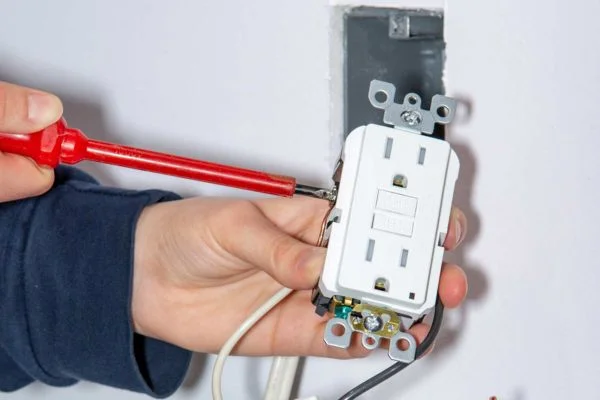Traveling in an RV is a great way to explore the world, but ensuring you have access to the necessary electricity is important. Installing an RV electrical outlet is essential if you want to use your RV for more than just sleeping and eating. This guide will help you understand how to install RV electrical outlet so you can power up your adventures!
How To Install RV Electrical Outlet | Step By Step Procedure
Step 1: Buy the Right Parts
Buying the right parts is the first step in installing your RV electrical outlet. Depending on what kind of current your specific RV requires, you’ll need to purchase a 30-amp, 125-volt, or 50-amp, 250-volt outlet. You’ll also need a junction box, mounting screws, wire nuts, and a circuit tester. Ensure all these items are rated for outdoor use before buying them.
Step 2: Prepare the Wiring
Next, prepare the wiring by stripping one end of each wire and attaching it to the appropriate terminal on the back of the outlet. Be sure to pay close attention to which wires go; connecting them incorrectly could cause a fire hazard. Also, ensure all exposed wiring is covered with electrical tape or heat shrink tubing before joining it to anything else.
Step 3: Mount The Outlet
Once your wiring has been connected correctly and securely taped off, you can begin mounting your new RV outlet into place. Before doing so, be sure you have found a suitable spot on either side (or both) of your camper that can accommodate your new outlet without obstructing any other features or accessories inside or outside your camper itself.
Once you’ve determined this location, mount your new outlet using mounting screws and secure it tightly against whatever surface it’s being mounted onto.
Step 4: Test It Out!
Finally, test your new setup with a circuit tester before plugging anything in or turning on any switches. This will help ensure everything works properly and safely before using it for real-world applications like powering up lights or appliances in your camper while traveling down the road!
Also Read: How To Keep Rv Surge Protector From Getting Stolen?
Are RV Outlets AC or DC?

RV outlets in the United States are AC (alternating current) and usually have either a 120-volt or a 240-volt capacity. The power an RV outlet supplies will vary, depending on the age of your recreational vehicle and its amenities.
Generally speaking, most RVs come equipped with one or more 110/120 Volt AC outlets, which means that you can use ordinary household electrical appliances in your RV without any additional adapters. DC (direct current) is not typically used in recreational vehicles due to its volatility and efficiency drawbacks compared to AC power.
That being said, some newer RVs offer both types of connections, allowing you to tap into either power source at any given time according to your needs. For instance, solar energy systems may be installed onto some modern RVs – these systems require DC voltage and thus necessitate access to an appropriate DC plug for installation purposes.
Furthermore, many manufacturers also provide various ‘power station’ options which feature dual outlets; this means that they include both 220-volt AC outputs and 12/24 volt DC outputs along with other safety features such as surge protection, etc., making them ideal for use, not just inside but outside the RV too!
Also Read: Why Is My Rv Fridge Not Working On Electric?
What Is The Most Common Rv Outlet?
The most common RV outlet is the 30-amp plug. This plug powers all types of RVs, motorhomes, and campervans. The standard US household outlets have either a 15 or 20-amp service, but an RV will require more amperage to operate all necessary appliances. A 30-amp outlet can provide up to 3,600 watts of power for running air conditioners, water heaters, refrigerators, and more.
These plugs are usually found on larger RVs, such as those with multiple slideouts or built-in generators requiring higher wattage levels than smaller units without them. Not every RV needs a 30-amp outlet; some may only need a 15 or 20-amp service to run basic appliances and electronics safely. Additionally, some campgrounds offer 50 amp services, depending on their offerings.
When searching for an RV camping spot, knowing which type of outlet you’ll need before entering the park is important since many parks can only accommodate certain connections (i.e., they may not offer both kinds).
It’s also important to use the proper adapter when connecting your RV with any available outlets regardless of whether it’s 15-, 20-, or 30 amps – so always double-check what your device requires before connecting!
Also Read: Can I Get An Rv Refrigerator With A Ice Maker?
Bottom Line:
How to install RV electrical outlet? Installing an RV electrical outlet is easier than it may seem at first glance! With some basic tools and knowledge about how electricity works, anyone can install electrical outlets in their RVs within a few hours.
However, if you feel uncomfortable taking on such a task, don’t hesitate to call an experienced professional electrician who can help get things done quickly and safely without any hassle! Happy travels!

